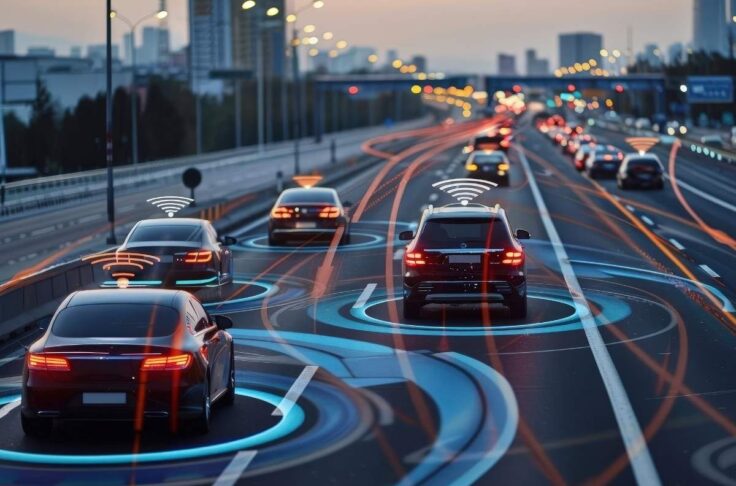The Day-to-Day Impact of Shared Mobility
Summary
The way people get from A to B is shifting towards Mobility as a Service (MaaS). Instead of relying on a personal vehicle, mobility as a service makes many forms of mobility accessible and shareable.
Imagine: it’s girls night and you need to plan how you’re going to get to dinner. You open your newest mobility app which tells you the fastest and most cost-efficient way to get to the restaurant – take the carshare parked a block away from your house, drive it to the Metro station, then take the train, which will bring you a block away from the restaurant.
You select that recommended route with a click and the carshare vehicle is reserved and paid; your train ticket is paid as well. To make things even better, you decide to pick up your friend in the carshare along the way, and split the cost of the trip with her. Another click and your carshare fare has been split.
This is what mobility is starting to look like – a future with less reliance on personal vehicles because there are so many shared mobility options out there. To make things even more convenient, one app allows you to plan, book, and pay for your journey. This is important for multiple reasons:
- People are more likely to adopt public transportation options if the first and last mile of their trip is taken care of. Since bus or train stops aren’t always in front of someone’s house, getting to the closest station easily brings more people into public transportation
- With more people using public transportation, less cars will be on the road and congestion will decrease. More people using public transportation also means less government funding is needed to keep the busses and trains running (hopefully, anyway)
- By making the cost of mobility variable (ie: paying per trip), people will have a better understanding on the amount they spend and perhaps be more encouraged to opt for walking or biking, creating a healthier community of individuals
Shared mobility options have been growing over the past decade to address people’s changing lifestyle and spending priorities. Specifically, there is more demand to live closer to urban centres and have access to a wide range of amenities. The close proximity to these amenities mean there is less need to drive to the gym or grocery store since it’s only a few blocks away. Getting to work can easily be done by public transportation as well since urban centres are typically transit hubs.
Even with the convenience of living in the urban centre, there are sometimes occasions when a car is needed, like for road trips or family gatherings in the suburbs. When you’re running late, it’s also nice to have a faster way to get to your destination.

To bridge the gap city dwellers face, numerous shared mobility options are now offered in places like Vancouver, Seattle, Chicago, and San Francisco. From traditional carsharing to ridesharing, people have many services to choose from to fit their personal preference and mobility needs.
- Round-trip carsharing – Access a group of shared vehicles located in designated parking spaces around the city. Vehicles need to be returned back to the same location at the end of the trip (ex: Enterprise CarShare, Cambio CarShare, Zipcar)
- One-way carsharing – Access a group of shared vehicles spread across the home area, meaning vehicles can be found either in parking lots or on street. Vehicles can end anywhere within the home area, meaning vehicle does not need to be returned to the same location (ex: Communauto Alberta (formerly Pogo CarShare), SHARE NOW (formerly car2go / ReachNow))
- Bike sharing – Similar to carsharing, bike sharing allows access to a group of shared bikes that are typically in specific stations, though bikes can be parked at any station (ex: Citi Bike, Mobi)
- Ridesharing – Traditionally ridesharing was akin to the notion of carpooling, ridesharing has now taken the form of rides hailed by an app and vehicle driven by an ordinary driver (ex: Lyft, Uber)
- Peer to peer – Individuals rent out their vehicles to other people for a fee (ex: Drivy, Getaround, Turo)
There’s another level of convenience that can be added to the mobility experience – a platform that consolidates the booking and paying functions across different shared mobility options, including public transportation. With one platform, it will be easier to determine what the most convenient option is without having to open multiple apps. Similarly, the lowest cost option can also be easily identified. Even if your trip involves multiple carshare options, you will only have to pay through one channel.
This is how we see shared mobility continuing to evolve in the next few years. Beyond that, connected cars and artificial intelligence is going to transform the mobility experience, as outlined in Deloitte’s video. In the video, Ben uses an app that determines what is the best way for him to get home based on his past behaviour and the behaviour of those similar to Ben. At the same time, Ben is also able to buy his groceries online and have it ready for pick up before he gets home. These capabilities are paramount to an even better user experience, though it is one that will be further down the road.
In the meantime, we should rethink our habits on getting around and begin embracing new forms of mobility. Technology is going to continue advancing our traditional methods of mobility and the benefits that come with these advances will make day-to-day life easier.


